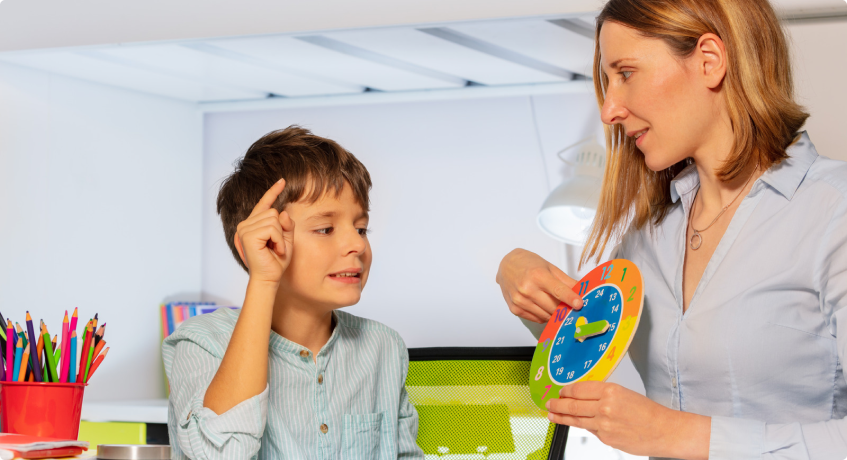Cerebral Palsy and Autism
Cerebral palsy and autism are brain disorders. Although there are certain similarities in the symptoms, and it is possible to be diagnosed with both, these are distinct conditions. Children with cerebral palsy are more likely to be diagnosed with autism. Autism is a manageable lifelong condition.
Home > What Is Cerebral Palsy? > Cerebral Palsy and Autism
- Last Updated Date: March 24, 2025
Cerebral palsy (CP) and autism spectrum disorder (ASD) are disorders that affect the development of the brain. Although they have some similarities, these are two different conditions. They have different sets of symptoms, and the treatment for each one is unique.
Even though they are different conditions, CP and autism can occur together. In fact, having CP increases the risk that a child will be diagnosed with autism. The co-occurrence of these two conditions can present certain challenges when creating a treatment plan, as it is important to take all of the child’s needs into account.
What is the difference between autism and cerebral palsy?
Cerebral palsy and autism affect brain development. In both conditions, changes to the brain occur early in development—before, during, or shortly after birth.
However, the two conditions manifest in different ways. Cerebral palsy primarily affects a person’s body movements, coordination, and posture. By contrast, autism mainly affects communication and social interactions.
Both cerebral palsy and autism occur on a spectrum, meaning that some children are severely affected and cannot live independently, while others show only mild effects of their condition.

Does cerebral palsy increase the risk of autism?
It has been established that children with CP are at a higher risk for autism. Approximately 7 percent of children with CP also have autism. By comparison, slightly more than 1 percent of children in the general population have ASD.
Autism is more common among children with non-spastic CP and less common in those with the spastic type. However, children with any type of CP are at a greater risk for ASD than other children.
The reasons for the link between the two conditions are not entirely clear. Some types of brain injury can lead to CP and ASD, although many people with these conditions don’t show obvious signs of brain injury. Changes in how brain cells connect could also cause these two conditions.
Common genetic and environmental factors could also increase the risk for CP and autism. To some degree, this is known to be true. For example, preterm birth is a risk factor for CP and ASD. Other risk factors for autism include:
- Genetics. People with a family history of autism are more likely to develop it themselves, and parents with one autistic child are more likely to have another one. Those with certain genetic conditions have a greatly increased risk of autism.
- Birth complications. Those who experience difficulties during birth are more likely to develop ASD, as are those born prematurely.
- Sex. Males are more likely than females to develop autism.
- Age of the parents. Children with older parents are more likely to develop autism than those with younger parents.
Researchers continue to work to understand all of the risk factors for ASD and to determine what causes this condition.
What are the signs of autism?
Children with autism spectrum disorder may show several possible signs of their condition. Some of these signs include:
- Lack of eye contact
- Restricted or absent facial expressions
- Difficulties with social interaction or lack of interest in interacting with
others - A high degree of sensitivity to sensory input, such as tastes, smells,
textures, or sounds - Being upset by changes in routine
- Repetitive movements or speech
- Hyperfocus on a restricted set of interests
Some overlap exists between signs of cerebral palsy and signs of autism spectrum disorder.
Signs that may be present in both conditions include:
- Delayed language or language impairment. In the case of CP, this is often
caused by motor difficulties with speech, while in the case of autism, it is
caused by changes in brain development. - Abnormal or repetitive movements. Children with CP often show
repetitive movements as part of their motor disorder, whereas those with
ASD may choose to perform repetitive movements. - Unusual walking patterns. Gait abnormalities are a common sign of
cerebral palsy. Research has shown that many people with ASD also have
atypical walking patterns, although this doesn’t occur in every case.
Autism and CP are often diagnosed in early childhood. For a child who has CP and ASD, the diagnoses of both disorders are sometimes made at roughly the same time. For some children, however, only one diagnosis may be made initially, with the second condition not recognized until later.
The diagnosis of ASD is more complex in children with CP. Many of the standard diagnostic tests for autism may not be suitable for children with cerebral palsy. For example, since many children with CP have difficulty with the motor aspects of speech, the usual methods of evaluating their ability to communicate verbally may not be appropriate.
Diagnostic tests for ASD may also ask children to perform certain complex motor tasks, and children with CP may struggle with these.
What are the types of autism spectrum disorders?
In 2013, the American Psychiatric Association merged several different diagnoses into one umbrella diagnosis, autism spectrum disorder (ASD). These separate diagnoses included:
- Autistic disorder
- Asperger syndrome
- Childhood disintegrative disorder
- Pervasive developmental disorder-not otherwise specified (PDD-NOS)
All of these conditions are now considered to be varying presentations of ASD. The choice to merge the diagnoses was based on the recognition that, rather than being grouped into discrete types of autism, people with this condition exist on a spectrum, each exhibiting a slightly different set of signs and symptoms.
How is autism managed?
There is no known cure for either cerebral palsy or autism. These permanent brain conditions will last for the rest of a person’s life. However, there are ways to manage these conditions to make the affected person’s life easier.
Cerebral palsy treatment includes therapy, medications, and sometimes surgeries to manage the disorder. Some patients may also find assistive devices useful for more independence.
Management of autism depends on the severity of the condition. Some patients are only mildly affected and can function well and live independently, although they often benefit from some support. Others experience more severe effects and may need lifelong care.
Some of the options that may be used for managing autism include:
- Social skills training. These programs teach children important social skills, such as how to initiate social interactions and maintain a
conversation. - Speech therapy. This may include learning to use assistive communication devices.
- Occupational therapy. OT helps children develop fine motor skills, visual-perceptual skills, and cognitive skills and addresses sensory-
processing problems. - Sensory integration therapy. This teaches people with ASD to manage their responses to sensory inputs, such as sounds, tastes,
smells, and textures. - Applied behavior analysis. A form of therapy intended to manage problem behaviors in children with ASD, applied behavior analysis
rewards desirable behaviors while ignoring undesirable actions. - Medications. No medications can be used to treat ASD itself, but medications can sometimes manage certain symptoms, such as the
inability to focus.
Management of ASD may also include changing the child’s environment. For example, training for parents can teach them how to relate to their child with ASD, and managing the educational environment may allow children with autism to integrate into a mainstream classroom.
Teachers can be trained in techniques to adjust classroom structure to promote learning for children with ASD, such as maintaining consistency and providing clear instructions in a visual (not just verbal) format.
It is common for families of children with ASD to try various complementary and alternative approaches to managing their child’s condition. These may include special diets, herbal treatments, vitamins or other supplements, and chelation therapy.
No scientific evidence shows that any of these therapies are helpful, and some of them may even cause harm. It is important to discuss any treatment you are considering with your child’s medical team to ensure the treatment is safe.
Certain alternative therapies, however, are considered safe and may even be beneficial. These include acupuncture, massage, and music therapy. Discuss your options with your child’s treatment team to find safe and effective alternative therapies.
Written by:
Birth Injury Center Team
The Birth Injury Center aims to create informational web content and guides to help women and their families seeking support and guidance for birth injuries caused by medical negligence. All of the content published across The Birth Injury Center website has been thoroughly investigated and approved by medical expert Natalie Speer, RNC-OB.

